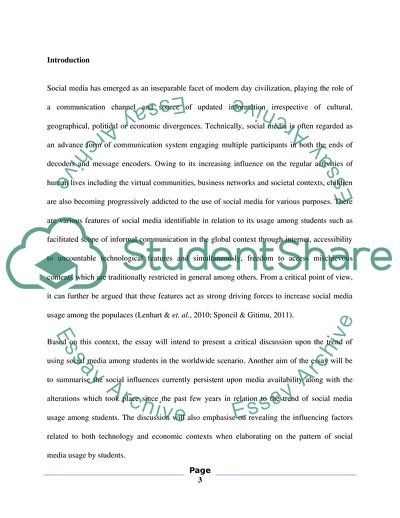Cite this document
(How Students Use Social Media Essay Example | Topics and Well Written Essays - 2250 words, n.d.)
How Students Use Social Media Essay Example | Topics and Well Written Essays - 2250 words. https://studentshare.org/media/1792228-formal-report-on-how-students-use-social-media
How Students Use Social Media Essay Example | Topics and Well Written Essays - 2250 words. https://studentshare.org/media/1792228-formal-report-on-how-students-use-social-media
(How Students Use Social Media Essay Example | Topics and Well Written Essays - 2250 Words)
How Students Use Social Media Essay Example | Topics and Well Written Essays - 2250 Words. https://studentshare.org/media/1792228-formal-report-on-how-students-use-social-media.
How Students Use Social Media Essay Example | Topics and Well Written Essays - 2250 Words. https://studentshare.org/media/1792228-formal-report-on-how-students-use-social-media.
“How Students Use Social Media Essay Example | Topics and Well Written Essays - 2250 Words”. https://studentshare.org/media/1792228-formal-report-on-how-students-use-social-media.


